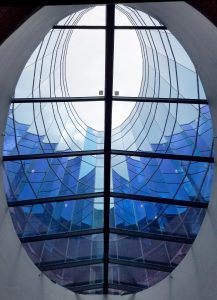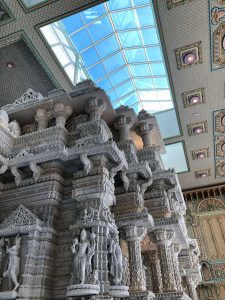Pyramid skylights stand at the junction between ancient architectural wisdom and modern design novelty. Such graceful structures fill interiors with natural light and add striking architectural features that enhance the overall building design. Hailing from the ancient pyramids of Egypt, today’s pyramid skylights have become versatile design features that complement a large variety of buildings, ranging from corporate offices to public institutions.
From ancient tombs to contemporary architecture, the long-term appeal of the design remains undiminished. Originally, the pyramidal shape had functional applications beyond symbolism. It allowed shafts of light through the shape to go deep down inside the building. The timeless design continues to be used by modern architects to enhance buildings into the 21st-century.
Beyond their aesthetics, pyramid skylights also contribute to energy savings, reducing the need for artificial light. Read on to see how these architectural elements can be used to elevate design spaces and enhance occupant well-being.
Pyramids can be used in a variety of ways, here are just a few applications:
- Atriums: Lighting up the center of commercial buildings.
- Shopping Malls: Open, inviting space for shoppers.
- Office Buildings: Enhance large workspaces with an open feel.
- Public Buildings: Libraries, museums, and all other public building examples.
Pyramid skylights can used in many different ways to provide aesthetic appeal and light:
- Central Halls: Creates a centerpiece and provides natural light to open, spacious spaces.
- Stairwells: Highlights steps and makes them more secure by lighting them.
- Entrance Canopies: An eye-catching way to add shelter from the elements while providing natural light.
Key Features of Pyramid Skylights
Pyramids have the same options as any other type of skylight.
Glazing Options: Glass or polycarbonate, there are several types of glazing to choose from although glazing options may be affected by local building codes.
- Clear Glazing: Allows maximum natural light or clear transparency.
- Tinted Glazing: Reduces glare and heat.
- Low-E Glass: Reflects heat for improved energy efficiency.
- Polycarbonate: Light in weight, highly resistant to impacts, and provides reasonable insulation.
Framing: A skylight frame is the most critical component of a skylight as it provides structural integrity and support for the glazing. Aluminum is often used as it has the advantage of being lightweight and highly resistant to corrosion and wear. It is also recyclable, which again supports the sustainability objectives.
Thermal Performance: To ensure the skylight will be energy efficient, the following elements are part of the structure:
- Insulated Glass Units (IGUs): This includes the reduction of heat loss.
- Thermally Broken Frames: Prevents heat transfer through the frame.
Design Integration: To make sure the pyramid is seamlessly integrated with the overall building design, consideration should be given to the following:
- Custom Sizes and Shapes: fulfill any specific architectural needs
- Color and Finish: Matches or completes the appearance of the building
Low Slope vs. Steep Applications: Pyramid skylights can be designed with a low slope of 2”/12” up to 7”/12” slopes. A slope is necessary for drainage and the degree of slope is usually determined by local building codes.
Proper installation is paramount to the performance and life expectancy of any skylight.
Professional Installation: The installation process should be done by people with relevant experience to help avoid problems such as leaking among others.
- Adequate Sealing: To prevent water infiltration and air leakage
- Regular Maintenance: Keeps the skylight in good condition and extends its lifespan.
Pyramid Skylights in LEED Building Applications
Pyramid skylights count towards LEED certification for building projects. Here are some ways they contribute:
Energy Efficiency: Since properly designed skylights reduce the need for artificial lighting, the associated energy consumption is cut down.
Daylighting: The pyramid skylights will provide natural light, which helps in earning points under the Indoor Environmental Quality category. In addition, good daylighting has been shown to raise the comfort and productivity levels of occupants.
Thermal Performance: Skylights that insulate well significantly enhance the thermal performance of the building envelope, thus enabling the building to earn points in the Energy and Atmosphere category.
Sustainable Materials: Skylights fabricated from recycled or regionally sourced materials will add points to the Materials and Resources category.
Heat Island Reduction: Some skylight materials have the potential to help reduce the heat island effect and might earn points in the Sustainable Sites category.
Innovation: Innovative applications of pyramid skylights that dramatically improve building performance or occupant well-being may be eligible for Innovation credits.
As with any LEED project, consulting with a LEED accredited professional will ensure skylights are designed and specified to optimize their potential contribution to LEED points.
Pyramid skylights are beautiful additions to any building, offering natural light and elegance. Using the information above will help building designers choose the correct placement and use of the pyramid shaped skylight. From the atrium of an office building to public spaces, pyramid skylights can make the design bright and inviting while contributing to LEED certification goals.



